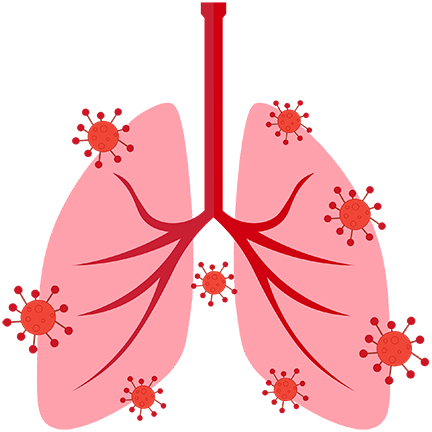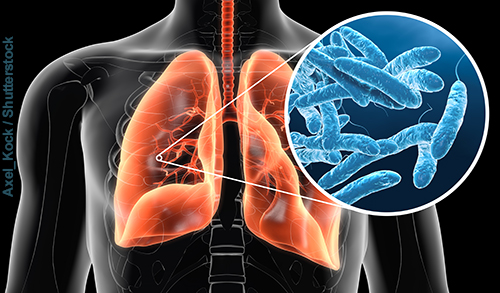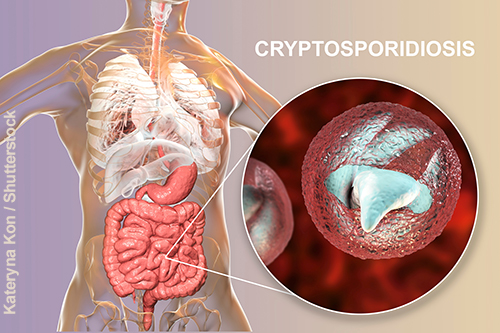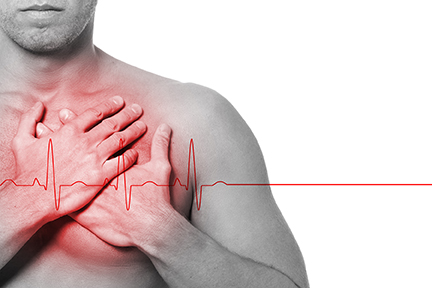There are a multitude of known illnesses individuals may contract from the use of recreational water sources such as swimming pools, hot tubs/spas, water parks, etc. . . In many cases these illnesses are caused by over chlorination which can produce toxic levels of harmful liquids and gases. In other cases these illnesses are due to germs or contaminants within the water source or from within the hidden surface bacteria film of which is often overlooked. Poor water management of these facilities is the most common cause of these issues.

Chlorination is the most popular method for disinfecting swimming pool water. However, although pathogens are being killed, many toxic compounds, called disinfection by-products (DBPs), are formed. Numerous publications have indicated that DBPs exposure may be related to several diseases, and Thomas Lachocki, the head of the National Swimming Pool Foundation of USA, has emphasized that the health benefits from swimming must be weighed against the risks of chemical exposure. The epidemiological evidence for adverse health effects from swimming in chlorinated water primarily originate from studies concerning respiratory function and asthma, although Villanueva et al. reported a significant increased risk of bladder cancer for swimmers compared with non-swimmers. The chlorination of pools has been associated with an increase in lung epithelium permeability, a risk of developing asthma, and with respiratory complaints. A meta-analysis performed by Goodman et al. demonstrated that the association between asthma and swimming could only be confirmed among competitive swimmers and could not be confirmed among non-competitive swimmers. Generally, competitive swimmers are the most possible victims of DBPs exposure, because they have to do a lot of high intensive training in swimming pools for years.
Materials developed by CDC. Reference to specific commercial products, manufacturers, companies, or trademarks does not constitute its endorsement or recommendation by the U.S. Government, Department of Health and Human Services, or Centers for Disease Control and Prevention. This material is otherwise available on the agency website for no charge.
You may get recreational water illnesses if you swallow, have contact with, or breathe in mists or aerosols from water contaminated with germs. You can also get them by having contact with chemicals that are in the water or that evaporate from the water and turn into gas in the air.
The following is a comprehensive list of some known and some lesser known illnesses that are associated with swimming and playing during the use of these facility types.

Swimmers are at risk for respiratory infections if they breathe in small droplets of water (mist) from a pool or hot tub that contains harmful germs. A respiratory disease caused by the germ Legionella is one of the most common waterborne diseases in the United States.
[3]
Materials developed by CDC. Reference to specific commercial products, manufacturers, companies, or trademarks does not constitute its endorsement or recommendation by the U.S. Government, Department of Health and Human Services, or Centers for Disease Control and Prevention. This material is otherwise available on the agency website for no charge.
Materials developed by CDC. Reference to specific commercial products, manufacturers, companies, or trademarks does not constitute its endorsement or recommendation by the U.S. Government, Department of Health and Human Services, or Centers for Disease Control and Prevention. This material is otherwise available on the agency website for no charge.

Legionella is a germ that can cause a severe type of pneumonia (lung infection) called Legionnaires’ disease. Legionella can also cause Pontiac fever, a milder illness without pneumonia. If you have symptoms of Legionnaires’ disease or Pontiac fever, such as cough, shortness of breath, fever, or muscle aches, see your healthcare provider right away. Be sure to tell your healthcare provider if you used a hot tub/spa in the last two weeks.
Materials developed by CDC. Reference to specific commercial products, manufacturers, companies, or trademarks does not constitute its endorsement or recommendation by the U.S. Government, Department of Health and Human Services, or Centers for Disease Control and Prevention. This material is otherwise available on the agency website for no charge.
People can get Legionnaires’ disease or Pontiac fever when they breathe in small droplets of water (mist) that contain Legionella. Legionella is found naturally in freshwater environments, like lakes and streams. It becomes a health concern when it grows and spreads in human-made water systems. Legionella can also be found in other human-made water systems such as cooling towers, plumbing systems, and decorative fountains.
Materials developed by CDC. Reference to specific commercial products, manufacturers, companies, or trademarks does not constitute its endorsement or recommendation by the U.S. Government, Department of Health and Human Services, or Centers for Disease Control and Prevention. This material is otherwise available on the agency website for no charge.
Certain groups of people are more likely to get Legionnaires’ disease:
Materials developed by CDC. Reference to specific commercial products, manufacturers, companies, or trademarks does not constitute its endorsement or recommendation by the U.S. Government, Department of Health and Human Services, or Centers for Disease Control and Prevention. This material is otherwise available on the agency website for no charge.
Materials developed by CDC. Reference to specific commercial products, manufacturers, companies, or trademarks does not constitute its endorsement or recommendation by the U.S. Government, Department of Health and Human Services, or Centers for Disease Control and Prevention. This material is otherwise available on the agency website for no charge.
To help protect swimmers’ health, chlorine is commonly added to the water to prevent the spread of germs and outbreaks. But chlorine can also combine with what comes out of or washes off of swimmers’ bodies, such as, pee, poop, sweat, dirt, skin cells, and personal care products, such as deodorant and makeup). This causes two problems:
Chlorine is used in pools and other chlorinated aquatic venues to kill germs, but when it binds to the body waste swimmers bring into pools (for example, sweat and urine) it can form chemicals called chloramines. Chloramines in the water, like dichloramine and trichloramine, irritate skin, eyes, and the respiratory tract (including the nose) when they off gas from the water and into the air above, particularly indoors. In addition, chloramines can also contribute to corrosion of metals around the aquatic venue and in air handling systems.
Healthy pools and other places where we swim in chlorinated water (for example, water playgrounds) don’t have a strong chemical smell. If you smell “chlorine” at the place you swim, you are probably smelling chloramines. Chloramines in the water can turn into gas in the surrounding air. This is particularly a problem in indoor pools, which often aren’t as well-ventilated as outdoor pools. The chloramines that form in the chlorinated water we swim in are different from the chloramine that is sometimes used to treat drinking water.
Materials developed by CDC. Reference to specific commercial products, manufacturers, companies, or trademarks does not constitute its endorsement or recommendation by the U.S. Government, Department of Health and Human Services, or Centers for Disease Control and Prevention. This material is otherwise available on the agency website for no charge.
Breathing in or coming into contact with chloramines at the places we swim can lead to negative health effects in swimmers and others in the swimming area, including:
Materials developed by CDC. Reference to specific commercial products, manufacturers, companies, or trademarks does not constitute its endorsement or recommendation by the U.S. Government, Department of Health and Human Services, or Centers for Disease Control and Prevention. This material is otherwise available on the agency website for no charge.
 “Crypto,” short for Cryptosporidium, is a germ that causes diarrhea. It is found in the poop of a person who has been infected with Crypto. Crypto is protected by a tough outer shell, which allows it to survive for more than 7 days, even in properly chlorinated pools and water playgrounds. Crypto can cause prolonged diarrhea (lasting 2 weeks or more, during which the diarrhea might stop and start again). Crypto can make anyone sick, but people with weakened immune systems are more likely to become seriously ill when infected with Crypto.
“Crypto,” short for Cryptosporidium, is a germ that causes diarrhea. It is found in the poop of a person who has been infected with Crypto. Crypto is protected by a tough outer shell, which allows it to survive for more than 7 days, even in properly chlorinated pools and water playgrounds. Crypto can cause prolonged diarrhea (lasting 2 weeks or more, during which the diarrhea might stop and start again). Crypto can make anyone sick, but people with weakened immune systems are more likely to become seriously ill when infected with Crypto.
Materials developed by CDC. Reference to specific commercial products, manufacturers, companies, or trademarks does not constitute its endorsement or recommendation by the U.S. Government, Department of Health and Human Services, or Centers for Disease Control and Prevention. This material is otherwise available on the agency website for no charge.
Crypto is spread by swallowing water that has been contaminated with poop containing Crypto. You share the water—and the germs in it—with every person who enters the pool. If one person infected with Crypto has diarrhea in the water, the water can be contaminated with tens of millions of Crypto germs. It only takes 10 or fewer germs to cause infection, which means that swallowing even a small amount of contaminated water can make you sick. Crypto can also be spread by swallowing contaminated water in water playgrounds, hot tubs, lakes, rivers, springs, ponds, streams, and oceans.
Materials developed by CDC. Reference to specific commercial products, manufacturers, companies, or trademarks does not constitute its endorsement or recommendation by the U.S. Government, Department of Health and Human Services, or Centers for Disease Control and Prevention. This material is otherwise available on the agency website for no charge.
Staphylococcus aureus (“staph”) is a germ that often lives in the nose or on the skin of healthy people. MRSA, short for methicillin-resistant Staphylococcus aureus, is a type of staph germ that is resistant to certain antibiotics.
In the community, most MRSA infections are skin infections (pustules, boils) that may be:
Materials developed by CDC. Reference to specific commercial products, manufacturers, companies, or trademarks does not constitute its endorsement or recommendation by the U.S. Government, Department of Health and Human Services, or Centers for Disease Control and Prevention. This material is otherwise available on the agency website for no charge.
MRSA does not survive long in pools and other treated swimming places (for example, hot tubs/spas) that have proper disinfectant (chlorine) and pH levels. There have been no reports of MRSA spreading through contact with recreational water. However, MRSA can be spread at recreational water facilities and other places by direct and indirect contact with infected persons. Direct contact can happen when you touch another person’s MRSA infection. Indirect contact can happen when you share items (like towels or razors) or touch surfaces (like hand rails or locker room benches) contaminated with MRSA. MRSA is most likely to spread when it comes into contact with an uncovered cut or scrape.

Tachycardia and initial hypertension followed by hypotension may occur. After severe exposure, cardiovascular collapse may occur from lack of oxygen.
[8]
Materials developed by CDC. Reference to specific commercial products, manufacturers, companies, or trademarks does not constitute its endorsement or recommendation by the U.S. Government, Department of Health and Human Services, or Centers for Disease Control and Prevention. This material is otherwise available on the agency website for no charge.
There are several studies currently available for research that indicate an association between chlorinated swimming pools and lower fertility in males. Due to the thin layer of skin in those sensetive areas men are more susseptiple to the negative effects of chlorine consumption through absorption. Younger children are even more suseptibale to these potential hazards.

Poorly maintained swimming pools are causing a multitude of illnesses and injuries more and more as pools age and build up resistance to chemicals. This resistance is due to protective coatings (biofilm) that form around colonies of bacteria and other contaminants. Those responsible for the maintenance of these pools generally turn to chemicals such as chlorine in a defeating attempt to combat such problems. In their attempt to balance the water they often dis-regard safety standards and add a dangerous amount of chlorine to the pool water. With the oversaturation of chlorine absorbing into your skin and the increased potential for breathing in chlorine gases while swimming, you run a greater risk of illness and injury. This is especially true for professional swimmers and those that swim regularly for personal exercise.
Concern is beginning to increasingly rise on the long term effects that Chlorine has on our health. Oversaturated chlorine pools may prompt genotoxicity or respiratory effects. Genotoxicity is a form of DNA or chromosomal damage that carries the potential to develop cancer cells within our bodies.
[19]
Materials developed by EPA. Reference to specific commercial products, manufacturers, companies, or trademarks does not constitute its endorsement or recommendation by the U.S. Government, Department of Health and Human Services, or Environmental Protection Agency. This material is otherwise available on the agency website for no charge.
Materials developed by ATSDR. Reference to specific commercial products, manufacturers, companies, or trademarks does not constitute its endorsement or recommendation by the U.S. Government, Department of Health and Human Services, or Agency for Toxic Substances and Disease Registry. This material is otherwise available on the agency website for no charge.